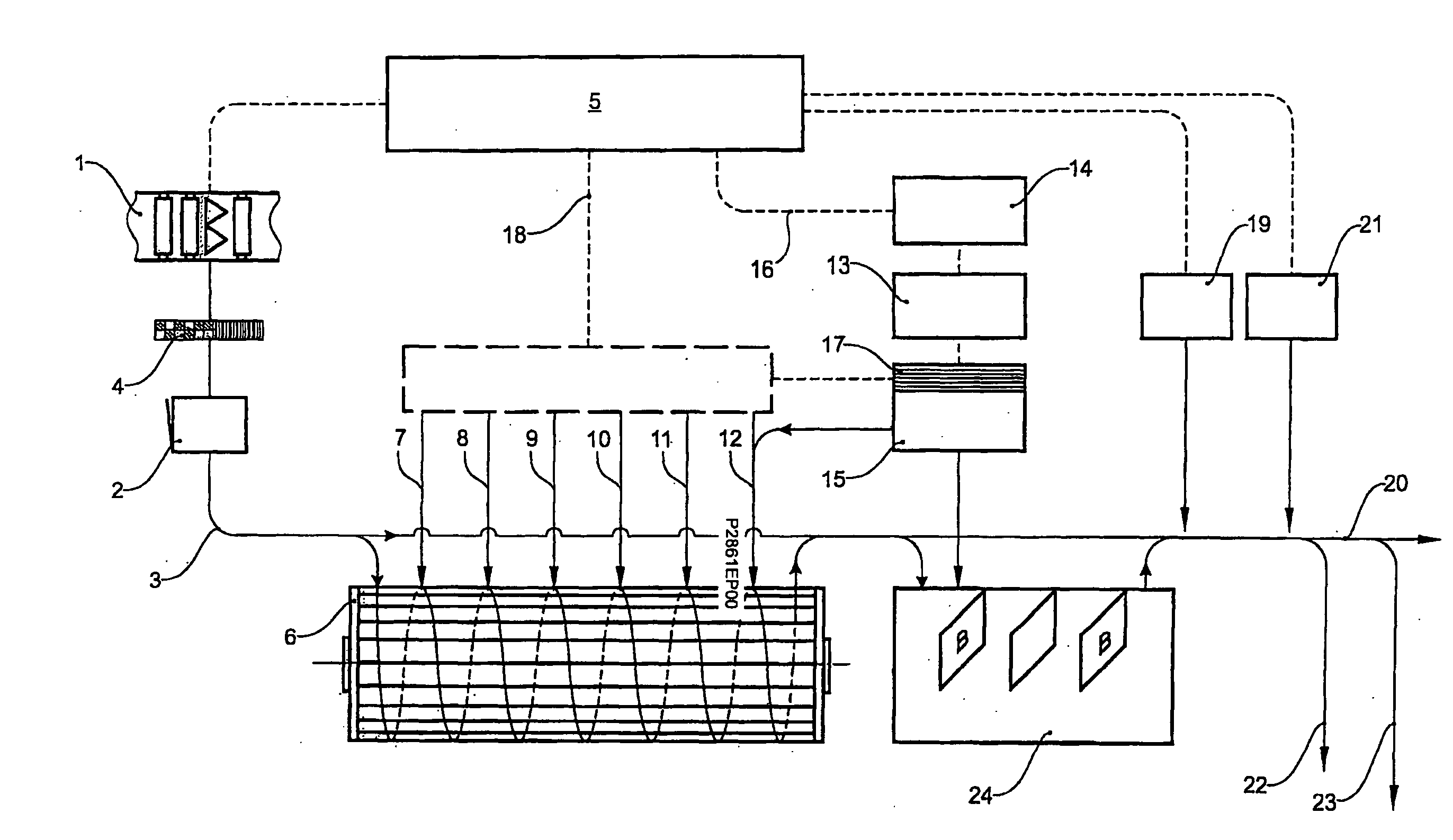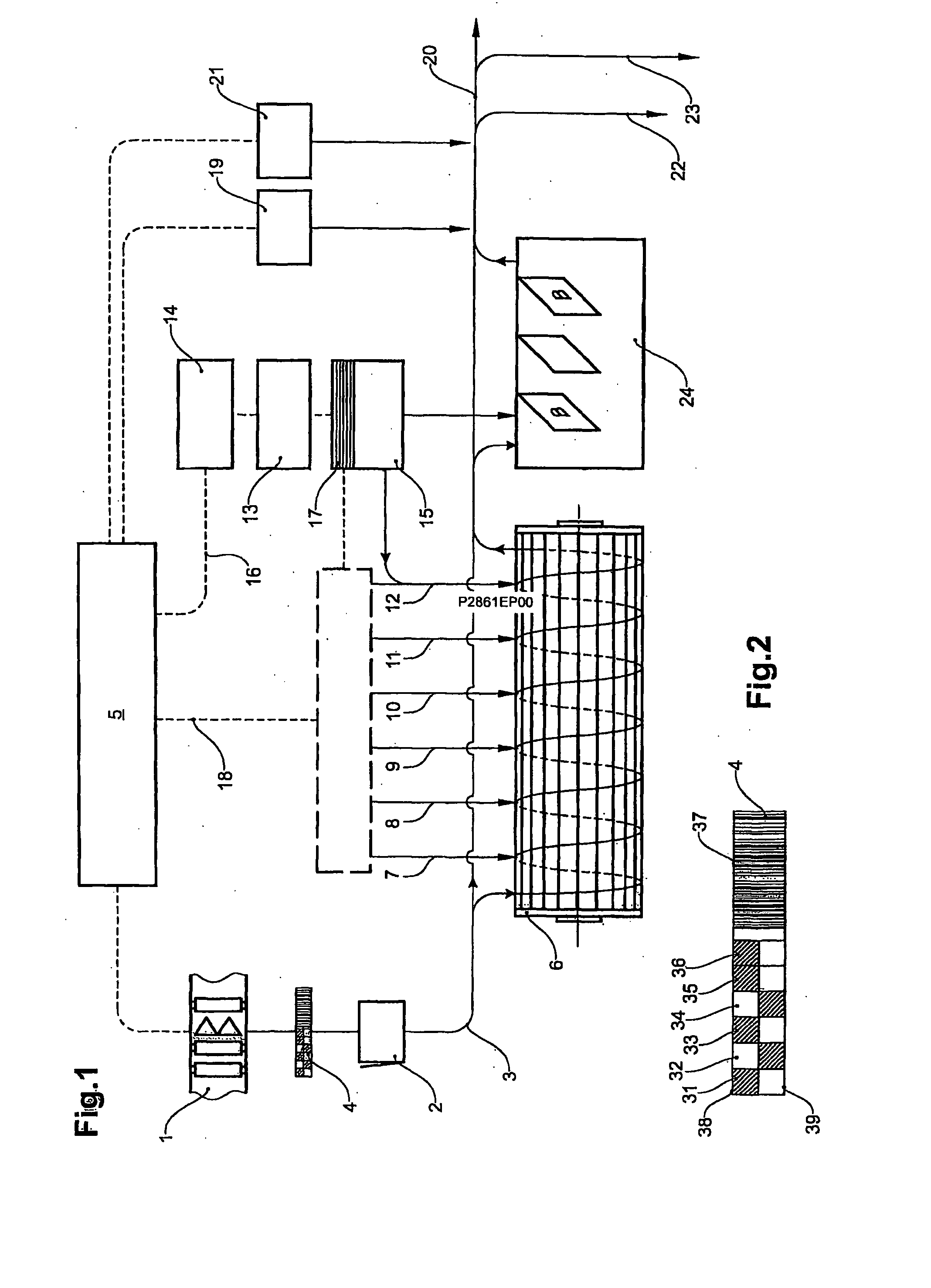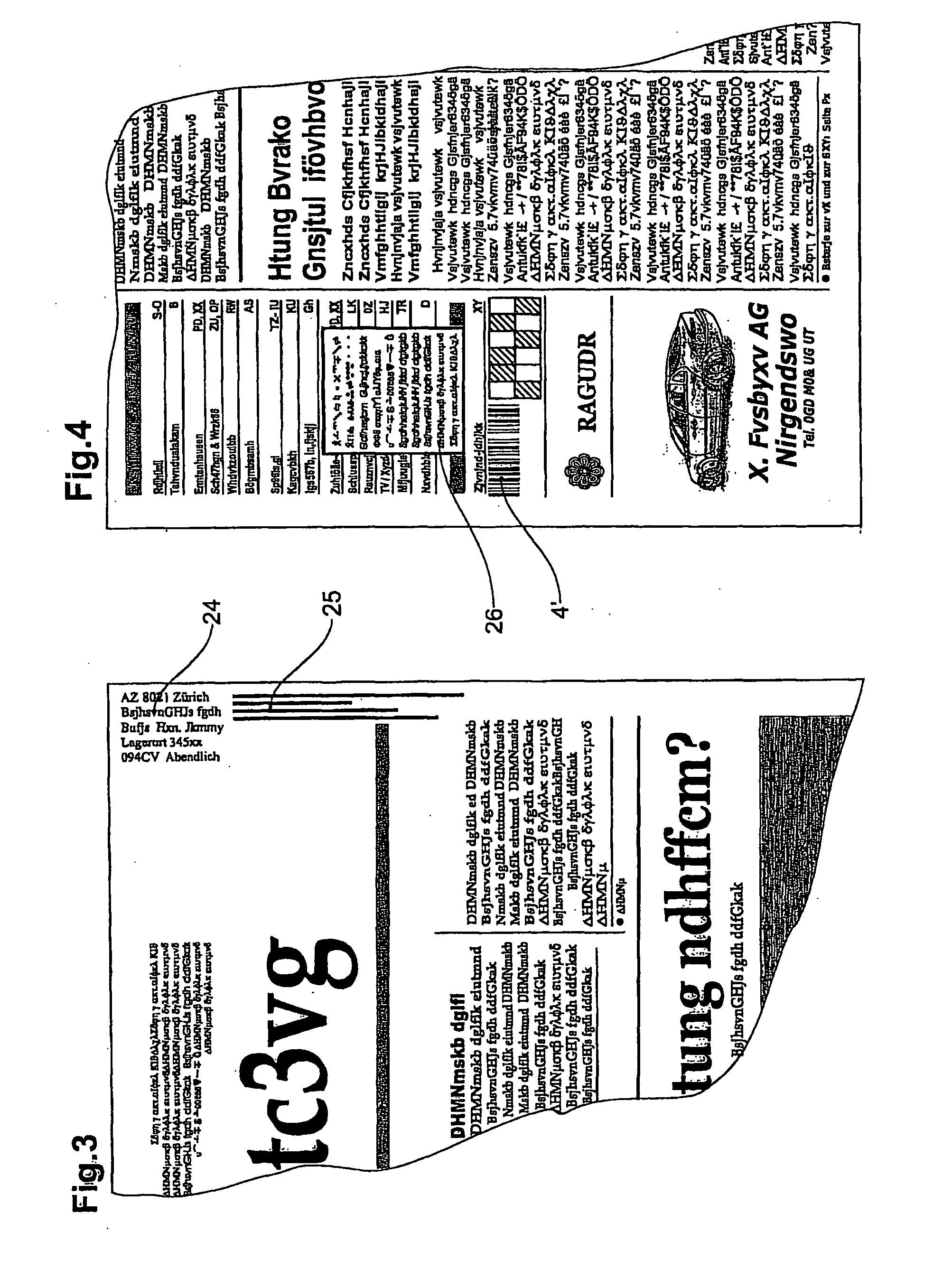[0029]A crucial
advantage of the invention is that the addressee-specific
assembly is controlled only by the information contained in the ID tag, without any
direct control instruction from a superordinate
control system. This not only relieves the load on the superordinate controller to an enormous extent but also makes the method much more robust, since even in the event of total failure of the superordinate controller the already indificated products are assembled correctly. To make the system even more stable, all the information required for generating the ID tags for an entire edition is stored in the relevant unit, for example in the digital printer in the rotary section, so that it is available locally and independently of the superordinate controller.
[0030]Both example products can then be individualized still further on an addressee-specific basis in line with
customer requirements. For example, an addressee-specific blog insert relating to the special subject Champions League and instances of corruption in professional football can be enclosed with the “Sample” product, and the “Meier” product is provided with a blog insert relating to the subjects of environmental scandals in China and the suppression of linguistic minorities in the former Soviet Union. Whereas, in the case of product individualization by means of addressee-specific
assembly, the selection of subjects is limited to the ready-made, conventionally produced subproducts, the selection of subjects for compiling the blog insert is almost unlimited. The preselection for the blog subjects is, as already mentioned, made by the subscriber, preferably using an online portal, and, like the selection of the subproducts, can also be changed as often as desired, even from issue to issue, and stored as appropriate in the addressee-specific subscriber profile.
[0031]In addition to the individualization which is performed on behalf or at the request of the addressee / subscriber, the present invention provides the option of taking the addressee-specific subscriber profiles, or the selection of the subproducts and / or the blog subjects, as a basis for providing the end product to be produced with addressee-specific advertising. This can be done in the area of assembly for example by inserting target-group-specific high-quality conventionally produced advertising inserts, sticking in exactly the same postcards, vouchers or product samples and, in the case of digitally printed inserts such as the blog insert, by integrating addressee-specific advertisements into the insert
layout. A person skilled in the art can see the enormous potential for target-group-oriented advertisement, through to fully individualized advertisement, which is provided by the system according to the invention, particularly also by the integration of forme-bound high-capacity printing processes and non-forme-bound printing processes in the production of a partly individualized printed product, and is capable, without any inventive involvement, of exploiting this potential by virtue of need-based adjustments for the specific individual case.
[0032]The fact that the method according to the invention is used to produce inventive, partly individualized products integrated with non-individualized standard products in a preferably serial or partially parallel production path means that it is also possible to provide new solutions to problems in addressing with missing or incorrectly assembled partly individualized products, and since the direct or indirect identification of the products as proposed by us. During indification of the main products, the non-individualized standard products and the partly individualized products are preferably put into an order which ensures that, towards the end of the production path, prior to the addressing, there are respective mini clusters of a respectively partly individualized product and one or more non-individualized standard products. Should an error occur during the addressing, or should a product partly individualized on an addressee-specific basis be missing, the or one of the immediately subsequently non-individualized standard products can be addressed as a replacement.
[0033]To prevent negative customer reactions, a further embodiment of the invention provides for the addressee to be informed that he is receiving not his subscribed partly individualized product but rather a non-individualized
standard product. The subscriber can be informed by means of an additional block of text, preferably created together with the addressing using
digital printing, or by means of the downstream affixing of an appropriate note. This can be accomplished very elegantly using an apparatus, as known from EP1106550, EP1086914 and EP1275607 from Ferag AG and established extremely successfully on the market under the
trademark MEMOSTICK®. To increase customer loyalty still further, the MEMOSTICK® note with the information about the wrong product may additionally comprise a
voucher for a free purchase of another printed product from the respective publishing house.
[0034]To implement the inventive systems with the identification means (IM) described previously as electronically readable or read / writable tags, sensors in the form of known electronic writers or read / writers are used which are suitable for contactless data transfer and change of identification. These system elements are also generic interfaces which simplify the integration of workstations or system components from third-party providers.BRIEF DESCRIPTION OF THE FIGURES
 Login to View More
Login to View More  Login to View More
Login to View More 


